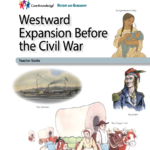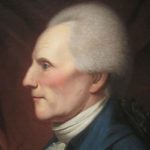The Constitutional Index breaks down the U.S. Constitution by Section, Amendment, and Clause and contains broader topics and themes. These are used to cross-reference Library resources in an effort to annotate constitutional history.
Westward Expansion Before the Civil War (CKHG Unit)

The unit explores the westward movement of Americans in the nineteenth century: the early explorers, effects of new developments in transportation, Native American resistance to settlers, and the treaties broken by government officials. Across 10 lessons, students explore the use of Manifest Destiny to promote the acquisition of US territory, the annexation of Texas, the Oregon Trail, and the California gold rush.
Lesson 1: Anti-federalist Arguments Against “A Complete Consolidation”

This lesson focuses on the chief objections of the Anti-federalists, especially The Federal Farmer (Richard Henry Lee), Centinel, and Brutus, regarding the extended republic. Students will become familiar with the larger issues surrounding this debate, including the nature of the American Union, the difficulties of uniting such a vast territory with a diverse multitude of regional interests, and the challenges of maintaining a free republic as the American people moved toward becoming a nation.